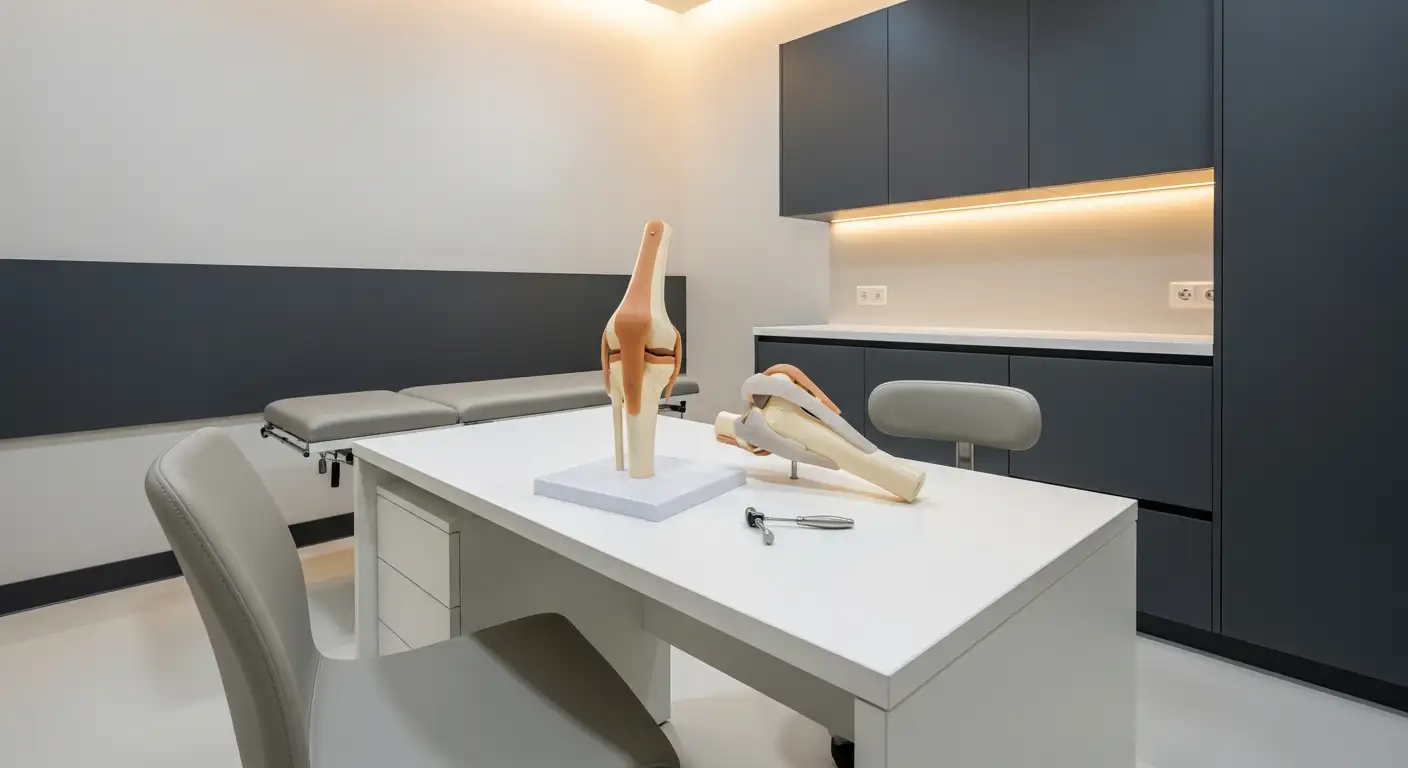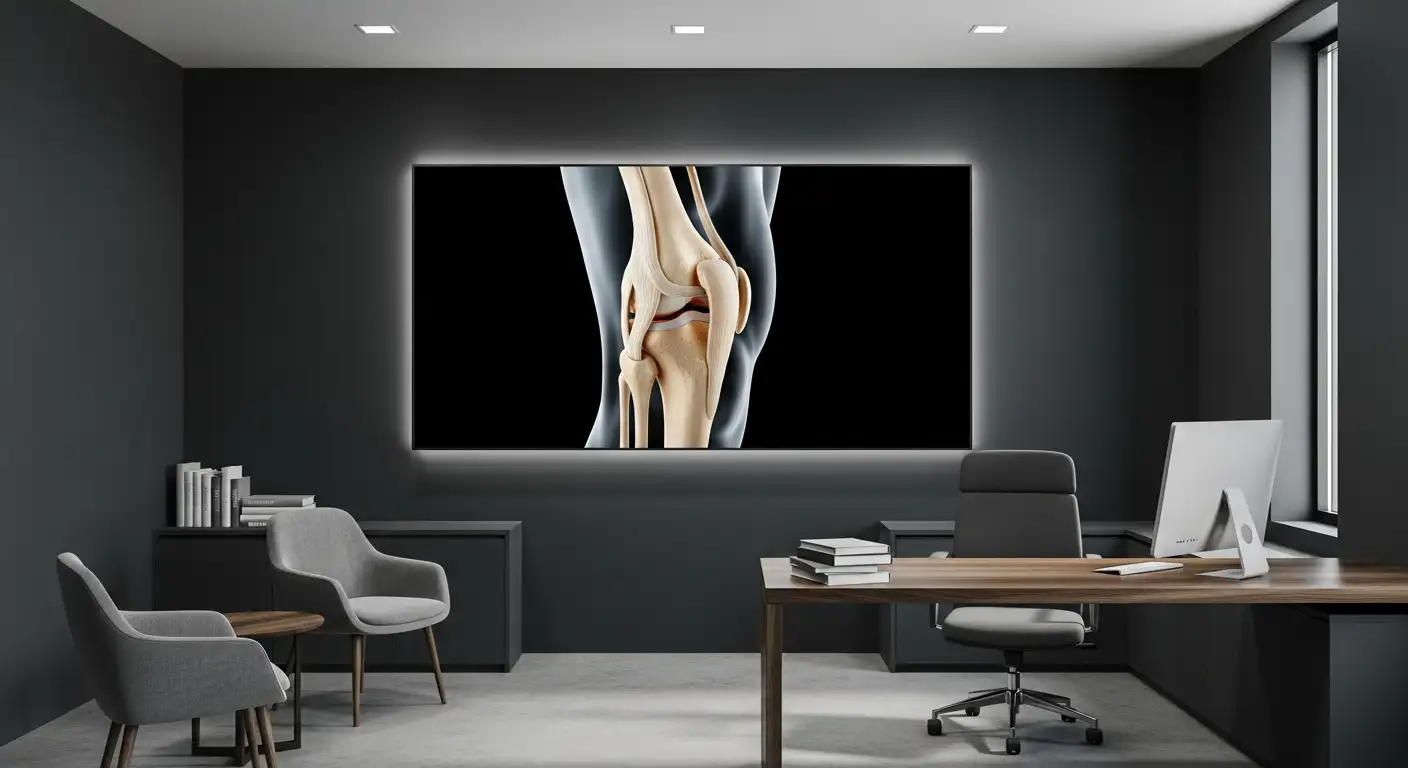Recovery After Knee Surgery
Recovery after knee surgery involves several key components, and understanding the phases of physical therapy and the importance of quadriceps strengthening is essential for a successful rehabilitation journey.
Phases of Physical Therapy
The post-replacement recovery process typically unfolds in three distinct phases:
- In the Hospital: This phase occurs 1 to 3 days after surgery. The focus is on managing pain and starting light mobility exercises.
- At Home: Following the initial recovery, which spans about 2 to 3 weeks, individuals begin exercises aimed at improving range of motion and light strength building.
- Outpatient Therapy: This phase can last up to 4 months. It focuses on strengthening exercises and preparing individuals to safely engage in desired activities, whether basic or more strenuous.
The exercises involved are crucial for enhancing range of motion and rebuilding muscle strength, particularly in the quadriceps, which is vital for knee stability [1].
| Phase | Duration | Focus |
|---|---|---|
| In-Hospital | 1-3 days | Pain management, light mobility exercises |
| At Home | 2-3 weeks | Range of motion, light strength exercises |
| Outpatient | Up to 4 months | Strengthening, functional goals |
Importance of Quadriceps Strengthening
The quadriceps muscles play a significant role in knee function and stability. Following surgery, many individuals experience weakened quadriceps, which is why quadriceps strengthening exercises become a cornerstone of rehabilitation. These exercises include actions like extending, squatting, stepping, and stretching, all aimed at improving overall quad strength.
Strengthening these muscles is vital for recovering mobility and returning to everyday activities. It is recommended to follow guidance from a physical therapist to ensure that leg strengthening exercises are performed correctly and effectively.
Exercises should start with body weight, progressing to elastic bands, ankle weights, and other equipment as strength improves. This gradual progression incubates the ability to support daily activities while minimizing the risk of setbacks [2].
Exercises Post-Knee Surgery
Progression of Strength Training
The progression of strength training after knee surgery is essential for effective recovery. Initially, the focus will be on improving the range of motion within the first six weeks post-surgery. From week six to week sixteen, individuals will shift toward rebuilding strength. The final phase aims at preparing patients for their desired post-surgery activities, whether they involve basic daily tasks or more strenuous physical activities [1].
Phases of Strength Training
| Phase | Duration | Focus |
|---|---|---|
| Phase 1 | 0-6 weeks | Improve range of motion |
| Phase 2 | 6-16 weeks | Rebuild strength |
| Phase 3 | 16 weeks and onward | Prepare for functional activities |
Exercises recommended during rehabilitation often include knee extensions, squats, stepping, and stretching. These exercises specifically target the quadriceps muscle, which may become weak due to surgery [1].
Cardiovascular Exercise Recommendations
Incorporating cardiovascular exercises into the recovery regimen is crucial. These activities enhance circulation, improve range of motion, and support strength-building efforts post-surgery. Recommended cardiovascular exercises include:
- Swimming
- Biking
- Walking on a treadmill
- Aerobic exercise classes
These activities not only raise body temperature but also boost blood flow, which is vital for healing [1].
Avoiding Overexertion and Setbacks
It is crucial for individuals recovering from knee surgery to avoid overexertion. Engaging in excessive activity too soon can cause knee irritation, pain, swelling, and potential setbacks in recovery. A gradual approach to rehabilitation is advisable. Patients should monitor their body's responses during physical activities and pace themselves to ensure a successful outcome. Following a structured and steady recovery plan will facilitate long-term success [1].
For tailored recovery exercises, including gluteus maximus stretches, it is beneficial to consult with a physical therapist who can provide specific guidelines based on individual needs.
Managing Swelling and Mobility
After knee surgery, managing swelling and improving mobility is essential for a successful recovery. Incorporating effective techniques can help alleviate discomfort and promote healing.
Swelling Reduction Techniques
Effective swelling management is vital following surgical procedures. Activities to reduce swelling include rest, elevation, ice therapy, and muscle pumping exercises. These techniques aim to alleviate pain and decrease swelling in the affected area.
| Technique | Description |
|---|---|
| Rest | Limit activity to allow healing. |
| Elevation | Keep the affected leg elevated. |
| Ice Therapy | Apply ice packs to reduce inflammation. |
| Muscle Pumping | Perform gentle exercises to promote circulation. |
For more information on post-surgery exercises, consider checking resources on knee extension muscles to ensure proper mobility is achieved.
Range of Motion Exercises
Range of motion exercises are crucial in increasing knee mobility. Simple exercises, such as knee straightening and bending stretches, should be performed multiple times a day. A recommended knee straightening stretch involves sitting on a chair or lying down with a rolled-up blanket placed under the ankle.
Other beneficial exercises include:
- Ankle Pumps: Gentle movements to stimulate blood flow.
- Heel Slides: Sliding the heel toward the body while lying down.
- Bed-Supported Knee Bends: Bending the knee while lying flat.
- Knee Straightening Exercises: Stretching the knee to regain full extension.
These exercises contribute significantly to restoring flexibility and mobility. For detailed guidelines, check out resources about band stretches and other effective techniques.
Importance of Walking for Recovery
Walking frequently throughout the day is crucial for building muscle strength and endurance after knee surgery. Patients are encouraged to engage in short walks as soon as possible. This early mobility promotes healing and reduces the risk of complications. Instructions on walking frequency can be personalized based on individual conditions and needs.
It's advised to gradually increase walking duration and distance. Incorporating this essential activity into the daily routine can greatly enhance recovery outcomes. For additional strategies on managing knee conditions, consider exploring content around knees popping out of place and chondromalacia patella surgery for related insights.
Strengthening Exercises Post-Surgery
Post-surgery recovery for a stiff knee involves targeted exercises to restore function and strength. This section focuses on important exercises for strengthening leg muscles, improving range of motion, and the significance of early mobility.
Leg Muscles Strengthening
Strengthening exercises for the quadriceps and other leg muscles are a pivotal part of recovery. Weak quadriceps are common after knee surgery due to the effects of the procedure. Effective exercises include:
- Quadriceps Sets: Sitting or lying with legs extended, tighten the thigh muscles while keeping the knee straight. Hold for a few seconds and relax.
- Straight Leg Raises: Lying on the back with one leg bent and the other straight, lift the straight leg to the height of the bent knee. Hold for a few seconds and lower.
- Knee Extension Exercises: Using a towel or resistance band, extend the knee while seated or lying down.
These exercises should be performed regularly to enhance muscle strength and stability. For further details on muscle anatomy, refer to the knee extension muscles.
| Exercise | Recommendation |
|---|---|
| Quadriceps Sets | 10-15 reps, 3 sets |
| Straight Leg Raises | 10-15 reps, 3 sets |
| Knee Extension Exercises | 10-15 reps, 3 sets |
Range of Motion Exercises
Improving flexibility and mobility is crucial after knee surgery. Range of motion exercises are best practiced in the early weeks of recovery. Recommended exercises include:
- Ankle Pumps: While seated or lying, flex and point the toes repeatedly to promote circulation.
- Heel Slides: Lying on the back, slide the heel towards the buttocks, then extend the leg back down.
- Bed-Supported Knee Bends: While lying down, bend the knee with support from a pillow to encourage movement.
Incorporating these exercises into routine care can significantly improve knee mobility and reduce stiffness. More about these techniques is available in the resource on band stretches.
| Exercise | Frequency |
|---|---|
| Ankle Pumps | 10-15 reps, 3-5 times daily |
| Heel Slides | 10-15 reps, 2-3 times daily |
| Bed-Supported Knee Bends | 10-15 reps, 2-3 times daily |
Early Mobility Importance
Early mobility is essential in the recovery process. Engaging in light walking can significantly aid in healing and prevent complications such as stiffness and blood clots. Walking encourages circulation and promotes healing within the knee.
Starting with short distances and gradually increasing as strength improves is advisable. Always consult a healthcare professional for personalized guidelines based on individual recovery progress.
Following a structured recovery plan with a focus on strength and mobility can greatly enhance outcomes after knee surgery. Information on managing symptoms like knee popping can be found at knees pop when squatting.
Physical Therapy Benefits
After undergoing knee surgery, physical therapy becomes an essential component of the recovery process. It provides multiple benefits that help ensure effective rehabilitation, allowing individuals to regain strength, mobility, and overall joint function.
Pain Management and Inflammation Reduction
One of the primary advantages of physical therapy following knee surgery is its role in pain management and inflammation reduction. Therapists use various techniques to alleviate discomfort, including:
- Gentle exercises that enhance blood circulation and promote healing.
- Manual therapy to manipulate the affected areas and reduce stiffness.
- Cold therapy to minimize swelling and pain in the initial recovery phases.
Incorporating these methods helps patients manage pain more effectively, which is crucial for progressing through rehabilitation.
Muscle Strengthening Exercises
Strengthening the lower leg muscles is vital for restoring function and mobility after knee surgery. Exercises targeting specific muscle groups should be incorporated early in the recovery process. Here is a list of essential exercises:
| Exercise | Description |
|---|---|
| Quadriceps Sets | Isometric contractions to activate quadriceps. |
| Straight Leg Raises | Lifting the leg while keeping it straight. |
| Knee Straightening Exercises | Gradually straightening the knee to improve range. |
These exercises are essential for regaining strength in the knee extensors, which play a critical role in stabilizing the joint. Following proper guidance during these exercises is important to minimize the risk of re-injury. For more information on strengthening the knee extension muscles, visit our article on knee extension muscles.
Early Mobilization Goals
Early mobility is a crucial factor in recovery after knee surgery. Immediate post-surgery goals focus on getting patients out of bed and walking within a few hours to promote healing and reduce the risk of complications. Physical therapy helps achieve early mobility through:
- Guided walking exercises to enhance joint movement.
- Assisted mobility techniques to boost confidence and decrease pain levels.
By prioritizing early mobilization goals, patients can significantly enhance their recovery journey, reducing stiffness and promoting quicker rehabilitation.
For more tips on effective recovery techniques, check out our resource on band stretches, which can also aid in improved mobility and flexibility.
Post-Surgery Exercise Recommendations
After knee surgery, it is essential to integrate a carefully structured exercise regimen to promote recovery and restore function. Following are key areas of focus: lower leg muscles strengthening, range of motion exercises, and recovery progression.
Lower Leg Muscles Strengthening
Strengthening the lower leg muscles is critical during the post-surgery recovery phase. Exercises targeting the quadriceps, calves, and hamstrings help rebuild strength and stability. Important exercises include:
- Quadriceps Sets: Contract the quadriceps muscles while keeping the knee straight.
- Straight Leg Raises: Lie down and lift the straightened leg to strengthen the thigh muscles.
- Knee Straightening Exercises: Gradually extend the knee with support to improve strength.
| Exercise Type | Recommendation |
|---|---|
| Quadriceps Sets | 10-15 repetitions, hold for 5 seconds |
| Straight Leg Raises | 10-15 repetitions, 2-3 sets |
| Knee Straightening Exercises | 10-15 repetitions, hold for 5 seconds |
Integrating these exercises can significantly assist in rebuilding strength after surgery [3].
Range of Motion Exercises
Maintaining and improving range of motion is vital for proper knee function post-surgery. Regular stretching and movement can help reduce stiffness and enhance recovery. Key range of motion exercises include:
- Heel Slides: Gradually slide the heel towards the buttocks while lying on the back.
- Knee Bends: While seated, slide the foot back and bend the knee gently.
These exercises promote flexibility and ease of movement in the knee joint.
| Exercise Type | Recommendation |
|---|---|
| Heel Slides | 10-15 repetitions |
| Knee Bends | 10-15 repetitions |
For a detailed exploration on the importance of range of motion during recovery, visit our pages on knee extension muscles and gluteus maximus stretch.
Recovery Progression Following Knee Surgery
Progressing through the rehabilitation process is crucial for effective recovery. Initially, exercises should start with bodyweight movements. As strength and stability improve, introduce resistance bands, weights, and machines to target specific muscle groups.
The progression often follows a structured path:
- Week 1-2: Focus on basic bodyweight exercises.
- Week 3-4: Introduce resistance bands and light weights.
- Week 5 and onward: Incorporate machines and advanced strength training techniques.
Regular consultations with physical therapists provide guidance tailored to individual recovery needs. Following a structured exercise program can help individuals return to their usual activities within three months after surgery [3].
By adhering to these recommendations, individuals can effectively manage their recovery journey post-knee surgery while minimizing risks of setbacks.





